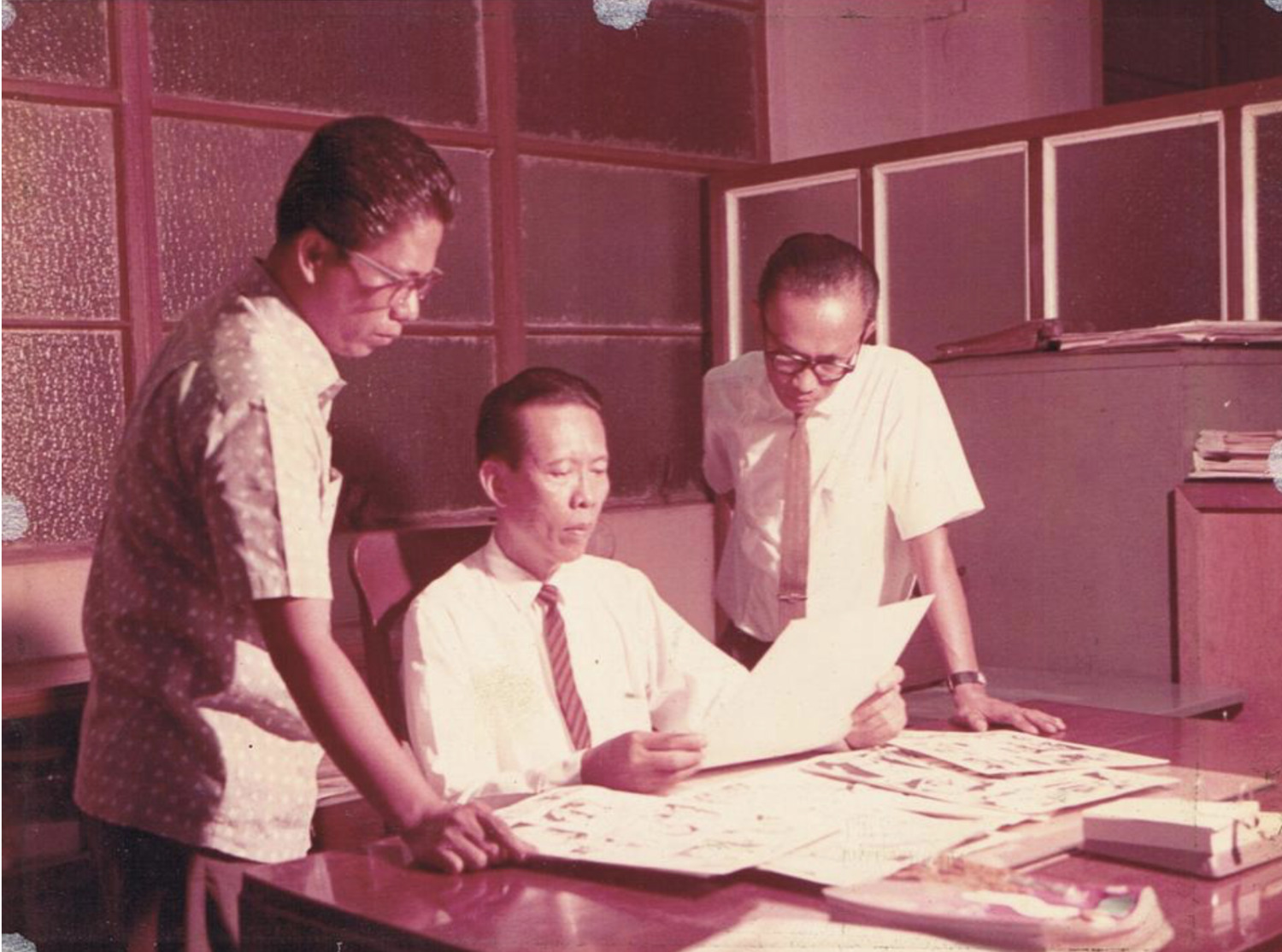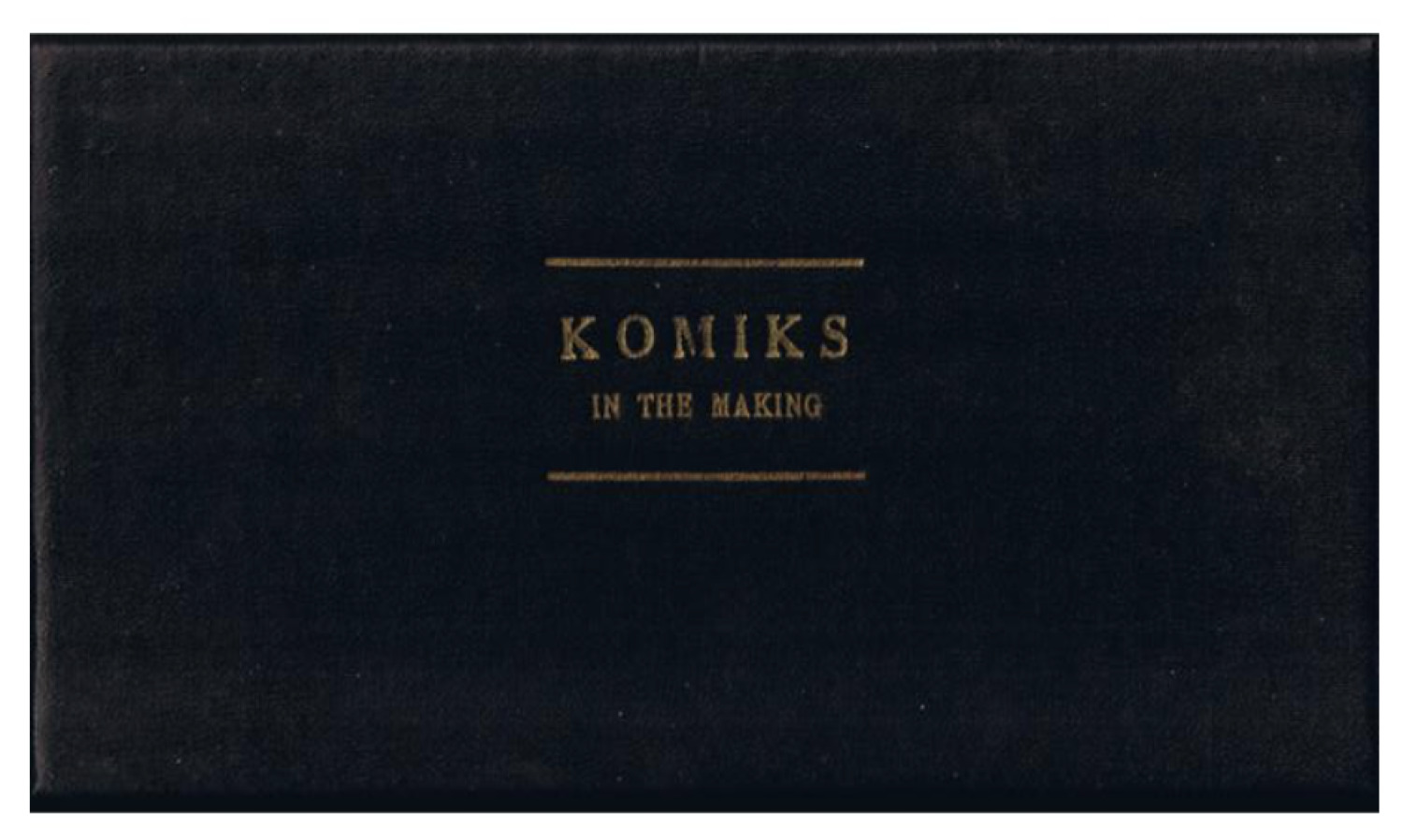Loading...

Komiks In The Making By Tony Velasquez
Posted Date: Tuesday November 22, 2005
Written By: Dennis Villegas Repost W/ Permission
Category: Blog
Read time: 5 minutes
INTRODUCTION
A year ago, I acquired this hitherto still unpublished work by Tony Velasquez entitled "Komiks in the Making" . Written and photographed by Tony Velasquez, this work is composed of 20 pages and personally bound into book form by him, sometime in the early 1960s during his term as General manager of the Graphic Arts Service, Inc.,(GASI).
I am featuring it now in this blog, with the gracious permission of Mrs. Pilar Velasquez.
In comic book publishing, the writer and the artist are considered the main creators of a komiks, yet there are many other people involved in its production, especially if the komiks has a large printing order, such as the GASI komiks (Pinoy Komiks, Pinoy Klasiks, Aliwan, Holiday, Pioneer, Teens Weekly).
In this never before seen work, Tony Velasquez takes you on a tour to see how a comic book in GASI was created. One can now readily appreciate the meticulous and painstaking process behind publishing komiks.
At that time, GASI was the largest publisher of comics in the Philippines. Its state of the art printing equipments, such as a stripping machine and a color separation machine (Vario Klischograph), were the first of their kinds to have been imported from abroad for local komiks publishing.
Tony Velasquez invested great time and effort studying the latest technology in publishing comic books, frequently traveling to Germany, the United States, and Japan to study their methods and techniques. The result of these painstaking efforts was the eventual growth and development of the Philippine komiks industry. Indeed, Velasquez not only pioneered the comic strip in the Philippines, he also founded and developed our local komiks industry, thereby employing people by the thousands, from writers to illustrators, from editors to draftsmen, to distributors and agents.
The numbered descriptions of the photographs are as exactly written by Tony Velasquez. Mrs. Velasquez told me that her husband himself photographed these pictures, with the exception of photo #2, which was taken from a tripod.
The notes within the parentheses, in italics, are mine.
KOMIKS IN THE MAKING by TONY VELASQUEZ
1. Scriptwriting—A story idea is hatched and the writer, typical of the scores who contribute to the Graphic Arts Service, Inc, nurtures it into a script.

2. Story Conference—The story is conferred upon by the Board of Editors. Practicing self-censorship, the Board is partial to the story’s entertainment value- the clean, wholesome type.(Some komiks publishers skip this part of the process, jumping immediately to number 3. Tony Velasquez is seated in the middle, his brother Damy Velasquez to his left)

3. Editing- The accepted story goes thru the usual editing for improvement.

4. Illustration- The illustrator, one of the many highly paid artist-contributors of the Graphic Arts Service, Inc., interprets the story into pictures.

5. Lettering- Captions and dialogues are lettered in the panels and balloons respectively to complete the picture-story.

6. Retouching- The retoucher “cleans” originals of overshooting lines and un-erased pencil impressions, etc., fixes panels and balloons of text.

7. Proofreading- The proofreader goes over captions and dialogues for possible errors in lettering and ballooning.

8. Final Editing- Originals, ready for reproduction, undergo final scrutiny by the chief editor (Damy Velasquez, chief editor of GASI, 1963-72)

9. Reproduction- Originals are reduced to komiks-page size into negatives by modern darkroom camera.

10. To Positives- Thru the vacuum contact table, positives are produced from negatives.

11. Stripping- Positives go to the stripping department to be laid out into flats.

12. Cover Color Separation- Highly-skilled craftsman-technician, trained in special color-separation course, does 4-color separation for attractive color covers.

13. Plate-Making- Flats for inside pages are reproduced on offset plates. 4-color letterpress plates for covers are made by VARIO KLISCHOGRAPH- a recent acquisition of the Graphic Arts Service, Inc. (The GASI was the first publisher in the Philippines to acquire this state of the art equipment from Germany)

14. Printing- Deadline finds the plates on the Webendorfer Rotary Offset, here shown rolling out the tens of thousands of copies for one particular issue.

15. Distribution- Copies, ready for the homes, are distributed by the Circulation Department to newsboys and magazine stands.
The Original Cover of "Komiks in the Making". Dennis Villegas Personal Collection.

Historical Commentary (6)
Randy P. Valiente said...
sheng!!!! galing nito!!!! sana sama mo ito dennis sa susunod mo na book
7:27 PM
Anonymous said...
ayos to Dennis.Malaking dagdag kaalaman ito sa mga hindi nakakaalam kung paano ginagawa ang komiks.I think Ramon Marcelino is on one of those pictures. Naging editor ko siya noon.
7:04 PM
Dennis Villegas said...
Randy: I'm planning to include it as an appendix to a Velaquez biography I'm currently researching :)
Dell: It's a great honor for me that you visited my blog. I'm a big fan of your works. Oo nga pala si Ramon Marcelino yung nasa kanan ni Tony Velasquez sa Picture #1, at yung nasa kaliwa naman ni Damy Velasquez sa picture #8. Na-interview ko siya lately, at talagang napakabait na tao!
Thanks ulit, at more power pa po!
12:04 PM
Dennis Villegas said...
oops picture number 2 pala...inaantok na hehe
12:05 PM
monsanto said...
Parang ang sarap magtrabaho sa GASI noon, ang sisinop pa nila sa lahat ng bagay :)
Nung panahon ko kasi, medyo tinatamad na yung mga colorist at color strippers eh.
12:56 AM
marvz said...
Galing!...again.
9:52 PM
Post a Comment
Most Recent
- KOMIKS TRIVIA: THINGS YOU MAY NOT KNOW
- THE TRUE BEGINNING OF DARNA
- The Unique & Unusual Arts Of Gregorio Coching
- Mga Pamana At Ala-Alang Iniwan Sa Akin Ng Komiks
- Mga Larawang Nasa Magkakasunod Na Kuwadro At Mga Usapang Nasa Loob Ng Tila Lobo
- The History Of Philippine Komiks
- Nestor Malgapo: Ang Mga Karanasan Ng Itinuturing Na ‘Maestro’ Ng Philippine Komiks
- Pilipino Funny Komiks For Children
- Jose Rizal: Komikero
- Vibal Foundation Launches Botong/Coching Art Books
- The 2009 Philippine Blog Awards
- For The Love Of The Tagalog Komiks
- Looking Back At The Rich History Of The Filipino Comics Tradition
- Hi. Happy New Year to all of you!
- Tony Velasquez Photo Gallery 3
- Gruaga: The Fantasy World Of Alex Nino
- Bemboy: Ravelo's First Comic Strip, 1939
- KOMIKON 2006
- Blog Update
- Tony Velasquez: Photo Gallery 2

All Content © Komiks Diner 2019-2025 | All Rights Reserved
